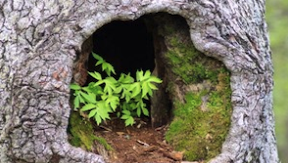Habitat for Hollow-Dwelling Species

Produced By:
Tasmanian Government
States:
Qld, NSW, SA, NT, ACT, Tas, WA
Aimed at:
Grade 9
- 9
Curriculum 8.4
ACMMG216, ACMMG217, ACMMG218, ACMMG219, ACMMG221, ACMMG222, ACMMG224, ACTDEK043, ACTDEK046, ACTDEP048, ACTDEP049, ACTDEP050, ACTDEP051, ACTDEP052, ACSSU175, ACSSU176, ACSHE228, ACSIS164, ACSIS165, ACSIS166, ACSIS169, ACSIS170, ACSIS171, ACSIS172, ACSIS174
Curriculum 9.0:
AC9S9U01, AC9S9U02, AC9S9H01, AC9S9I01, AC9S9I02, AC9S9I03, AC9S9I04, AC9S9I05, AC9S9I06, AC9S9I07, AC9S9I08, AC9TDE10K03, AC9TDE10K06, AC9TDE10P01, AC9TDE10P02, AC9TDE10P03, AC9TDE10P04, AC9TDE10P05, AC9TDI10P01, AC9TDI10P04, AC9TDI10P05, AC9TDI10P06, AC9TDI10P09, AC9TDI10P12, AC9M9M01AC9M9M02, AC9M9M03, AC9M9M05, AC9M9ST03, AC9M9P01, AC9M9P02, AC9M9P03
Lesson Type:
Subjects:
Keywords:
energy, organisms, habitat, hollow, data, ratio, trigonometry, force, motion, ecosystems, algorithms, programming, shapes, scales, intervals, surface, species, tree, shelter, nest, wildlife, artificial
Habitat for Hollow-Dwelling Species
The Human Impact on Wildlife Habitat lesson plan provides a unique opportunity for students to understand the impact of human activity on wildlife and the crucial role that artificial habitats can play in conserving and preserving the delicate balance of ecosystems. Designed for students working in groups, this teacher resource will challenge and engage them as they work to design and build a camera monitoring device to observe the types of animals who inhabit a local reserve and an appropriate artificial habitat for one of the identified species.
Tree hollows, which are an important source of shelter and nesting space for wildlife in urban and agricultural areas, have become increasingly limited due to human activity. The Human Impact on Wildlife Habitat lesson plan aims to raise awareness of this critical issue and inspire students to explore innovative solutions that can help conserve and protect wildlife habitats.
Throughout the lesson, students will develop critical thinking and problem-solving skills as they work to design and build a camera monitoring device that can capture the types of animals that inhabit the reserve. They will also learn about the importance of tree hollows and the impact of human activity on wildlife habitats, as well as the challenges of creating artificial habitats that can provide a safe and sustainable environment for wildlife.
